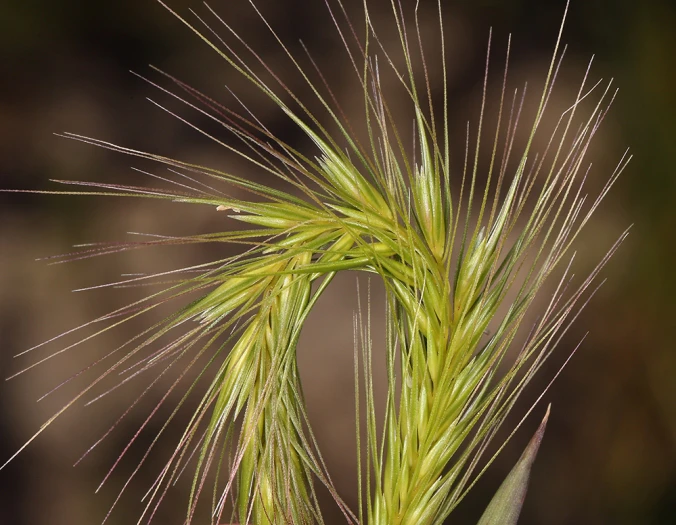Little Barley
(Hordeum depressum)
Little Barley (Hordeum depressum)
/
/

© Steve Matson
CC BY 4.0
Image By:
© Steve Matson
Recorded By:
Copyright:
CC BY 4.0
Copyright Notice:
Photo by: © Steve Matson | License Type: CC BY 4.0 | License URL: http://creativecommons.org/licenses/by/4.0/ | Uploader: matsonburger | Publisher: iNaturalist |

























Estimated Native Range
Climate Requirements for Richmond, Virginia
| This Plant | Your Site | Plant Suitability for Your Location | ||
|---|---|---|---|---|
| • Precipitation | 3" - 71" | 43" | Aquatic | Aquatic |
| • High Temp. | 66°F - 108°F | 90°F | Your summer temperatures are normal for this plant. | Excellent |
| • Low Temp. | 10°F - 49°F | 27°F | Your winter temperatures are normal for this plant | Excellent |
This plant should grow well at your location with about N inches per year (Y minutes per month) of irrigation.
Summary
Hordeum depressum, commonly known as Little Barley or Dwarf Barley, is an annual grass native to various habitats in the western United States, particularly California. It is particularly adapted to seasonally wet areas such as vernal pools and meadows, which dry up in summer. Little Barley typically forms small tufts of thin, hairy leaves and erect stems that can reach up to 20 inches in height. The inflorescence is a distinctive green or reddish-green spike, 0.8 to 2.4 inches long and about 0.2 inches wide, with spikelets arranged in triplets. The central spikelet is fertile and larger, while the two side spikelets are smaller and often sterile.
In cultivation, Little Barley is valued for its ability to thrive in wet, seasonally inundated soils, making it a suitable choice for rain gardens or areas with poor drainage. It is also used for habitat restoration projects due to its native status and the role it plays in supporting local ecosystems. Little Barley prefers full sun to part shade and can tolerate a range of soil types, provided they are kept moist during its growing season. While not commonly used in ornamental gardening, it can be an interesting addition to native plant gardens or naturalized areas.CC BY-SA 4.0
In cultivation, Little Barley is valued for its ability to thrive in wet, seasonally inundated soils, making it a suitable choice for rain gardens or areas with poor drainage. It is also used for habitat restoration projects due to its native status and the role it plays in supporting local ecosystems. Little Barley prefers full sun to part shade and can tolerate a range of soil types, provided they are kept moist during its growing season. While not commonly used in ornamental gardening, it can be an interesting addition to native plant gardens or naturalized areas.CC BY-SA 4.0
Plant Description
- Plant Type: Grass
- Height: 0.5-1 feet
- Width: 1-2 feet
- Growth Rate: Moderate
- Flower Color: N/A
- Flowering Season: Spring
- Leaf Retention:
Growth Requirements
- Sun: Full Sun
- Water: Low
- Drainage: Fast, Medium
Common Uses
Drought Tolerant, Erosion Control, Low Maintenance
Natural Habitat
Native to various habitats in the western United States, particularly adapted to seasonally wet areas such as vernal pools and meadows
Other Names
Common Names: Low Barley , Desert Barley
Scientific Names: Hordeum depressum , Critesion depressum , Hordeum nodosum var. depressum
GBIF Accepted Name: Hordeum depressum